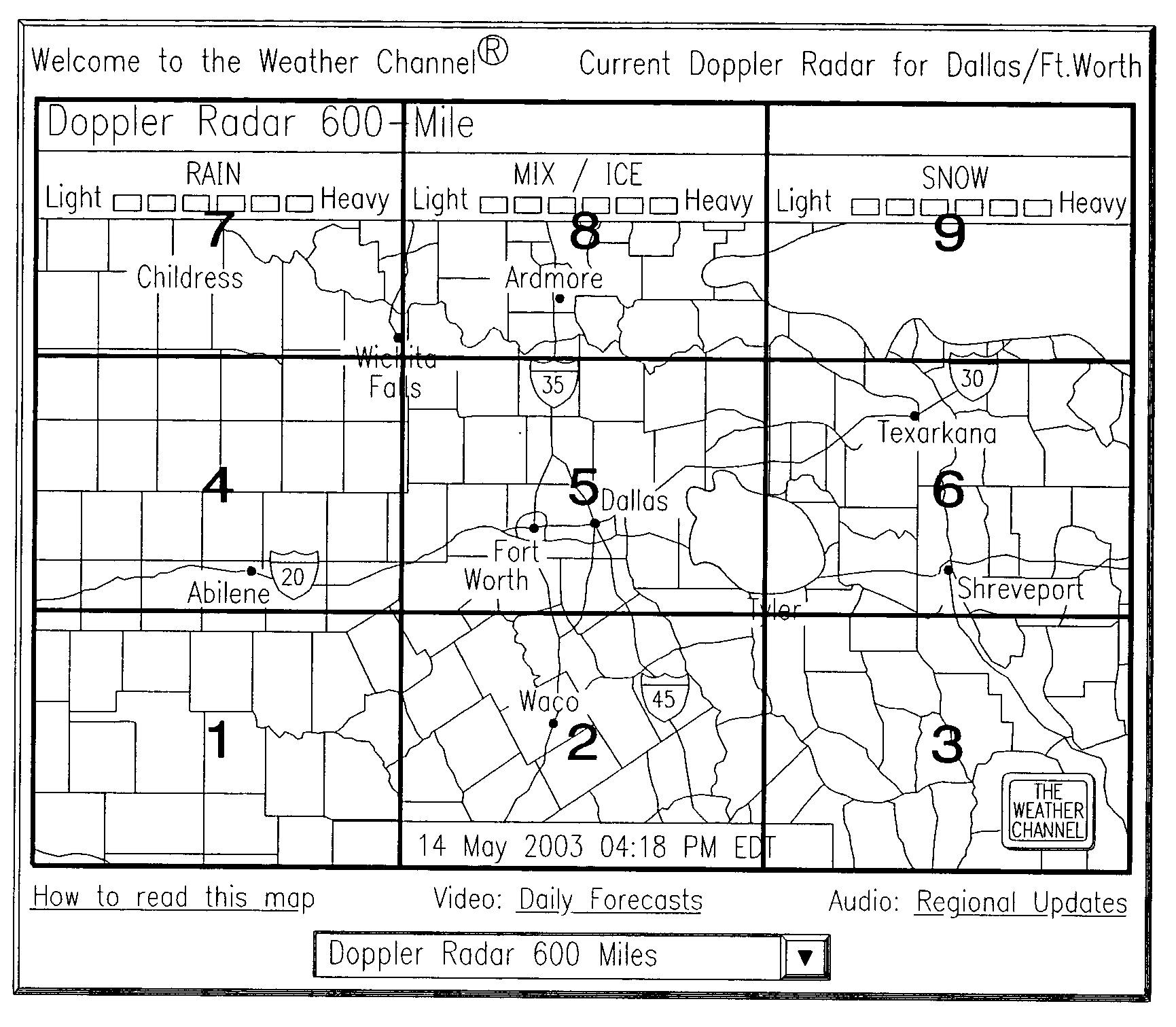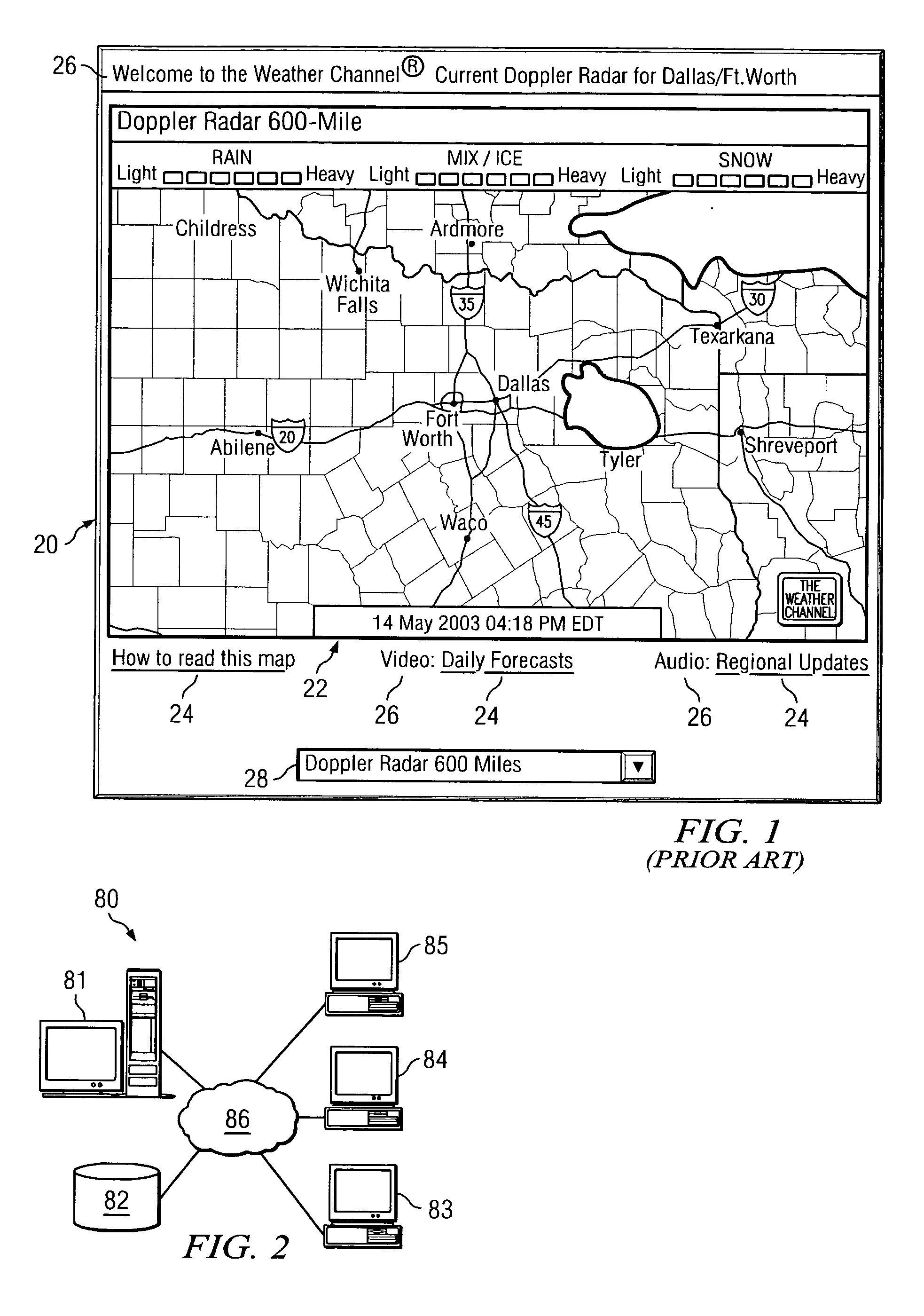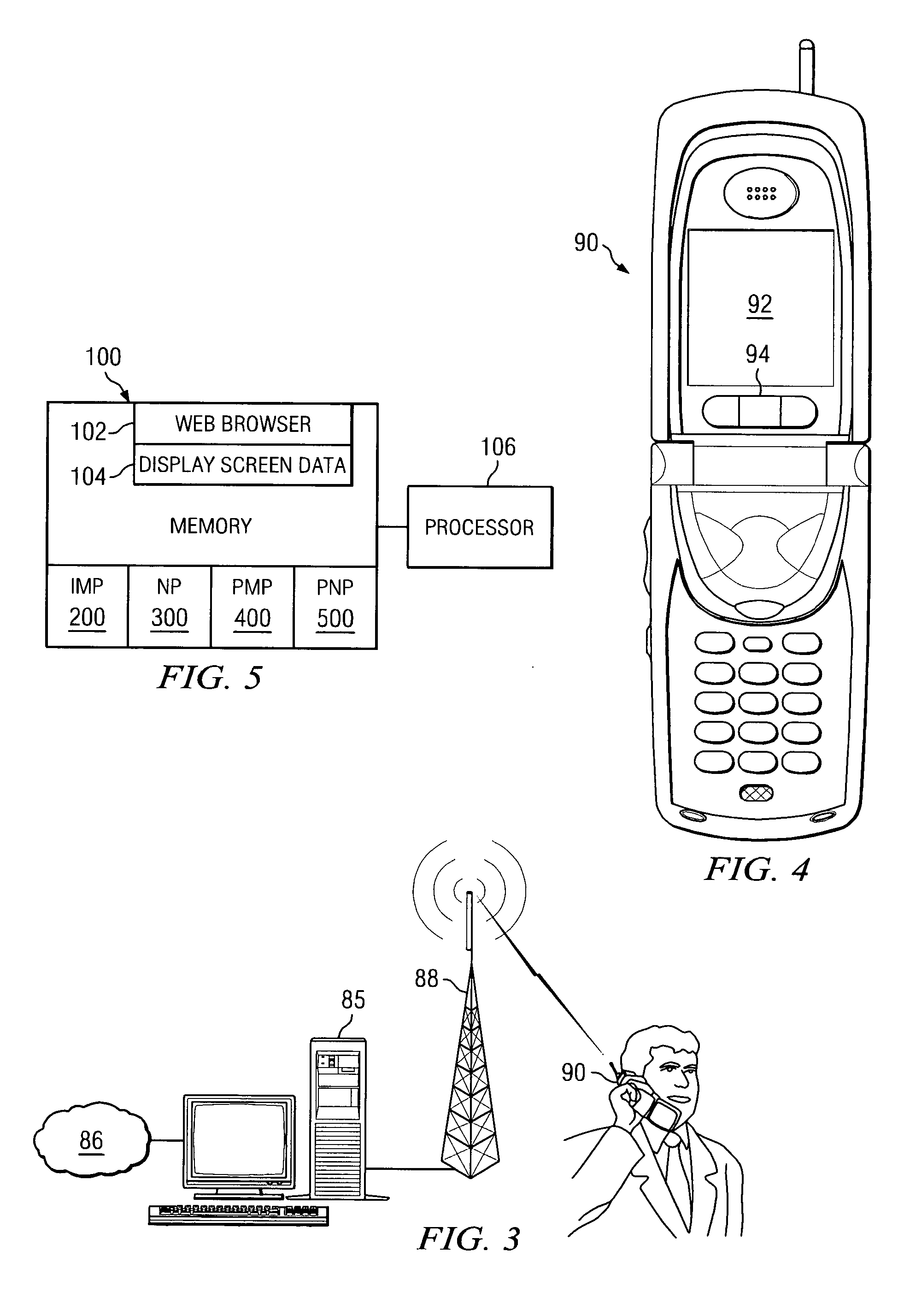Apparatus and method for distributing portions of large web images to fit smaller constrained viewing areas
a technology of web page and display device, which is applied in the direction of static indicating device, data switching network, instruments, etc., can solve the problems of reducing the size of the web page, affecting the display of web page elements, and web page elements may become too small to read or understand, so as to reduce the amount of information
- Summary
- Abstract
- Description
- Claims
- Application Information
AI Technical Summary
Benefits of technology
Problems solved by technology
Method used
Image
Examples
Embodiment Construction
As used herein the term “computer” shall mean a machine having a processor, a memory, and an operating system, capable of interaction with a user or other computer, and shall include without limitation desktop computers, notebook computers, personal digital assistants (PDAs), servers, handheld computers, and similar devices.
As used herein, the term “display screen” means a device used to display a graphical user interface of a computer program. Examples of display screens are liquid crystal display (LCD) screens, plasma screen, cathode ray tubes, computer monitors, thin film transistor (TFT) screens, and the like. Persons of ordinary skill in the art are aware of other types of display screens.
As used herein, the term “HHDD” is an acronym for “hand held display device” and means any portable device capable of displaying an image. Examples of HHDDs are wireless telephones, personal digital assistants (PDAs), handheld computers, digital cameras, and similar devices.
As used here...
PUM
 Login to View More
Login to View More Abstract
Description
Claims
Application Information
 Login to View More
Login to View More - R&D
- Intellectual Property
- Life Sciences
- Materials
- Tech Scout
- Unparalleled Data Quality
- Higher Quality Content
- 60% Fewer Hallucinations
Browse by: Latest US Patents, China's latest patents, Technical Efficacy Thesaurus, Application Domain, Technology Topic, Popular Technical Reports.
© 2025 PatSnap. All rights reserved.Legal|Privacy policy|Modern Slavery Act Transparency Statement|Sitemap|About US| Contact US: help@patsnap.com



